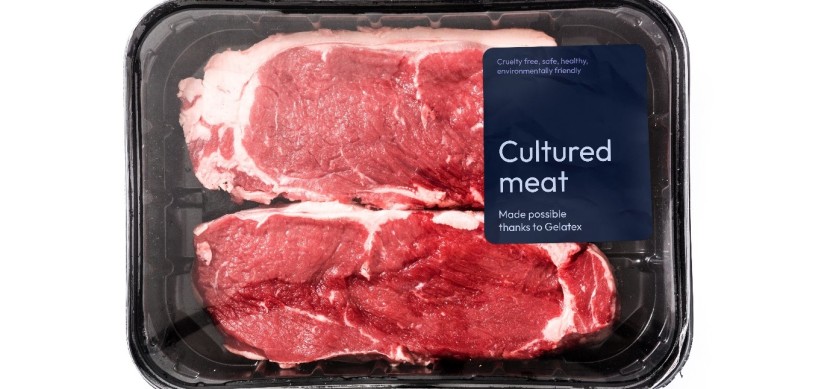The Sensory Puzzle of Cultivated Meat: Navigating Taste, Texture, and the Path to Consumer Acceptance
In the race to make cultivated meat a viable alternative to traditional meat products, one of the biggest hurdles isn't just in the science of growing cells or engineering the right biological environment for them—it’s in how the final product tastes, feels, and smells. For all the technological progress that companies have made in replicating the structure of animal tissue, they’re fully aware that any compromise in the sensory experience—or organoleptic qualities—could be a deal-breaker for consumers when these products finally hit the market.
Cultivated meat starts with a cell line—usually stem cells—that are then encouraged to grow and differentiate into muscle or fat tissue, among others. From a scientific perspective, the process is highly individualized, varying significantly depending on the company’s approach, whether it's through suspension culture alone or an adherent culture, which requires scaffolds. These scaffolds aren’t just passive supports—they play a direct role in how the final product behaves and feels in the mouth. The structure of cultivated meat is highly dependent on these scaffolds, especially when they’re hybrid products, where a plant-based scaffold is used to support cultivated cells to give the final product a more "meat-like" texture.
Hybrid products, which combine cultivated meat with plant-based scaffolds or ingredients, are emerging as one solution to overcome the textural challenges of purely cultivated meat. These products often use scaffolds made from plant materials to structure the meat cells, providing the necessary fibers and layers to mimic the bite of real meat. The hybrid approach aims to offer the best of both worlds—incorporating the sustainability and cell-based precision of cultivated meat with the structural benefits of plant-based components. These scaffolds, however, bring new challenges in achieving the right sensory balance. Plant-based materials may behave differently from animal tissue during cooking, sometimes altering the expected mouthfeel or even the taste. While scaffolds can help create a more structured and familiar texture, the customization process is complex, often requiring extensive back-and-forth in research and development to perfect the sensory qualities and ensure they closely resemble conventional meat.
The role of scaffolds is nuanced. In cultivated meat products with minimal scaffold content—typically between 5-10%—the scaffold serves as a differentiation platform, where cells can mature into muscle fibers or fat tissue. In these cases, the scaffold is partially digested by the cells during the growth process, leaving behind smaller quantities in the final product. This smaller scaffold presence generally has less impact on the organoleptic properties, allowing the product to more closely resemble conventional meat. However, in hybrid products where scaffolds are used in larger quantities to give structure to the meat, they can also be highly beneficial, improving the texture to more closely mimic conventional meat’s fibrous quality. The challenge lies in customizing these scaffolds for each product, as they require careful fine-tuning to avoid impacting the taste or texture in unexpected ways. It’s a balancing act, but when optimized, scaffolds can bring cultivated meat much closer to the sensory experience consumers expect from traditional meat.

SEM image of a Chitosan Halospun, microfiber scaffold
Scaffolds, whether plant-based or synthetic, are critical for creating the fibrous textures and the sensation of biting into real meat. They act as a substrate for the cultured cells, such as fat cells, myoblasts (muscle cells), or progenitor cells, which grow and differentiate on them. The success of the final product depends on how well the scaffold interacts with these cells to replicate the structure and texture of conventional meat. However, despite advancements in scaffold materials and cell culturing techniques, the final textures and mouthfeels of cultivated meat products may not always align perfectly with consumer expectations for conventional meat. This delicate interaction between the scaffold and the cells cultured on it requires precise calibration to deliver the desired sensory qualities

Zein based scaffold on a roll.
Fats, in particular, play a vital role in replicating the juiciness or marbling of traditional meat products. Fat, whether it’s part of marbling in a steak or the drippings from a burger, is essential to how meat cooks, tastes, and feels. In cultivated meat, fat tissue is typically developed from the differentiation of mesenchymal stem cells into fat cells. This process aims to mimic the natural fat content found in conventional meat, providing the same mouthfeel and juiciness during cooking. However, this differentiation process can be complex. The fat cells must behave like animal fat, meaning they need to melt at the right temperatures and interact with muscle fibers to replicate the texture and flavor of traditional meat. This balance between producing enough fat tissue and integrating it properly with muscle fibers is not always straightforward, and companies often find themselves reworking their prototypes to achieve the desired sensory characteristics.
That’s just the beginning. The media used in cell culture—the nutrient-rich liquid that keeps cells alive and encourages them to grow—is another critical factor. Most companies have already moved away from using fetal bovine serum (FBS), which is not only ethically questionable but also very costly. While FBS-free media are being touted as solutions for scaling up production, these new formulations can subtly or overtly change the taste of the final product. The nuances of flavor that we expect from meat, including the slight sweetness or umami notes, can be altered by the components of the media. Even more concerning is the potential for the media to introduce off-flavors, which might only become apparent after the meat is cooked, at the very last stage of product development.
It’s not just about taste, either. The texture, a key part of the organoleptic profile, is often compromised. Suspension culture, while effective for growing cells in large quantities, doesn’t naturally result in the structured, fibrous texture of animal meat. Without adequate structuring methods like scaffolds or other texturizing techniques, cultivated meat can feel spongy or mushy, failing to replicate the bite of conventional meat. Scaffolds help to some degree, but this solution is far from perfect. With plant-based scaffolds, for example, you might end up with a product that feels more like a processed plant patty than a juicy steak.
This creates an ongoing dilemma for companies working on cultivated meat. They’re pouring enormous resources into isolating cell lines, optimizing their culture methods, and perfecting their FBS-free media, but the organoleptic aspects often get pushed aside until much later in the development process. By then, it may be too late to make significant changes without further delays or costs. Companies might spend months on cell proliferation and metabolic assays, only to find that when they finally conduct sensory testing, the product doesn’t meet the expectations for taste, texture, or aroma. The fact that it’s cruelty-free or more sustainable won’t matter to the average consumer if it doesn’t taste good.

Confocal microscopy of BHK-21 fibroblasts on a Halospun nanofiber scaffold.
One of the biggest challenges is the lack of a comprehensive regulatory framework for cultivated meat. Without clear guidelines, companies are essentially navigating uncharted waters. This adds to the complexity, as different countries have varying levels of regulation, and many governments are still figuring out how to categorize and approve cultivated meat for consumption. The absence of standardization makes it difficult for companies to predict how their product will be evaluated, both from a safety and sensory perspective. This regulatory uncertainty forces companies to be even more cautious, potentially delaying innovation in the pursuit of compliance. In many ways, this lack of a regulatory roadmap amplifies the difficulty in addressing organoleptic challenges early on, as companies often don’t know the full scope of what will be required for product approval.
One way to anticipate these sensory problems is through the use of artificial intelligence (AI) and predictive modeling. With AI, companies can model how different variables—such as the type of cell culture media, the kind of scaffold used, or even the bioreactor conditions—affect the final product’s sensory profile. AI can simulate how subtle changes in the cultivation process might impact the texture or flavor, allowing companies to adjust their methods preemptively. This is a promising solution, but it’s still in its infancy and relies heavily on accurate data inputs, which can be difficult to gather at such an early stage. But if done correctly, AI could allow companies to avoid the trial-and-error method currently plaguing product development.
In the end, what’s clear is that cultivated meat companies can’t afford to overlook organoleptic qualities. Taste, texture, and aroma are not secondary concerns—they are central to whether or not consumers will adopt these products on a large scale. Many of these sensory issues are only being discovered in later-stage prototypes, which means they’re catching companies off-guard. Addressing these problems early, perhaps by integrating sensory evaluations earlier in the development pipeline or using AI predictive tools, could save time and resources down the line.
It’s also worth noting that consumers have high expectations when it comes to meat. They’ve spent their entire lives eating conventional meat, and they know exactly what it should taste, feel, and smell like. Cultivated meat has to meet these expectations, or else it risks becoming a niche product with limited appeal. The bar is high, and rightfully so, because for cultivated meat to become a true replacement, it can’t just be ethical or sustainable—it has to be enjoyable to eat.
So while the focus today is on getting the science right—growing the cells, optimizing the media, scaling up production—the industry must also look ahead to what really matters when cultivated meat reaches consumers’ plates. If companies can find a way to resolve these organoleptic challenges early on, perhaps with the help of AI or by innovating with new types of scaffolds and structuring methods, they’ll be much closer to creating a product that’s not only revolutionary but also delicious. Because at the end of the day, if it doesn’t taste good, cultivated meat won’t stand a chance.
Polish translation: Sensoryczna zagadka mięsa hodowlanego: wyzwania związane ze smakiem, teksturą i drogą do akceptacji konsumentów















